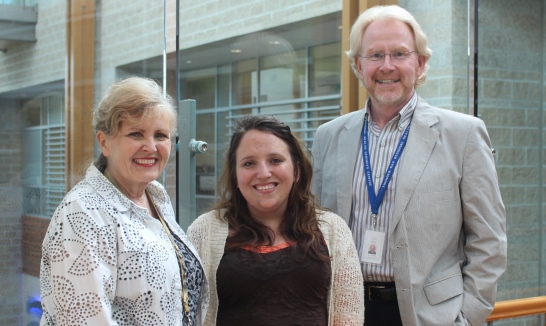
When a migraine brought Sara Hampel to Thunder Bay Regional Health Sciences Centre (TBRHSC) earlier this year, she had no idea that she would have access to one of the country’s leading neurosurgeons, based in Toronto, without even stepping into an airplane.
Thunder Bay neurosurgeon Dr. Stephen McCluskey saw Hampel and recommended a minimally invasive surgery for the treatment of hydrocephalus called Endoscopic Third Ventriculostomy (ETV). In an ETV, the surgeon uses a small video camera to “see” inside the brain and makes a hole in the bottom of one of the ventricles or between the ventricles to enable cerebrospinal fluid to flow out of the brain.
MORE: BETTER PATIENT ENGAGEMENT THROUGH BETTER TECHNOLOGY
“It’s not appropriate for everyone but she was an excellent candidate for ETV,” says Dr. McCluskey. The only obstacle – a significant one – was accessing the necessary equipment. Dr. McCluskey was able to rent the equipment, which took several weeks to arrive. Because he had not had access to a ventriloscope for a number of years, Dr. McCluskey had also not performed an ETV since his training. For that reason, he wanted an expert present during the operation. “It’s always good to have mentoring when you haven’t performed a specific procedure in a long time,” he says.
He contacted Dr. James Drake, a neurosurgeon in the Division of Paediatric Neurosurgery at the Hospital for Sick Children (SickKids) in Toronto and an expert in the science and surgery of hydrocephalus. Dr. Drake agreed to be present via Telemedicine.
TECHNOLOGY ABOUNDS TIME TO EMBRACE IT
TBRHSC’s Telemedicine Department worked to make sure the connection with SickKids would work and then scheduled the surgery via the Ontario Telemedicine Network, with a studio at SickKids and the TBRHSC’s Operating Room, which is equipped with Telemedicine cameras that allow off-site surgeons and/or students to see the surgery.
Dr. McCluskey says that the operation went very smoothly under Dr. Drake’s tele-mentoring. “As a physician, it’s very satisfying to be able to provide that service, rather than send a patient to Winnipeg or Toronto,” says Dr. McCluskey. “Eventually we would do this without mentoring.”
Hampel says she feels great and was glad she didn’t have to travel to Toronto. “Tele-mentoring is wonderful for people living in isolated communities like Thunder Bay and other towns in Northwestern Ontario. I think it’s wonderful that we have technology that allows us to access out-of-town specialists.”
Trina Diner, Manager of Palliative Care and Telemedicine, says there are plenty of opportunities for health care providers, including physicians, dietitians, pharmacists, social workers to take advantage of Telemedicine. “Even if the appointment or consult is only 15 minutes, we can reduce stress for patients and families having to take time off work to travel. This saves time and money, as well as separation from their support network of family and friends.”

